This week sees the anniversary of the London Blitz affecting London Zoo, not just on the 26/27th September but for many anxious nights to come. Slowly press coverage and press releases trickled out, reassuring people that not much harm or damage had been done.
Our first report is from an Australian newspaper archive, itself reprinting a South African source? World news indeed!
LONDON ZOO BOMBINGS.
Animals’ Remarkable Escapes.
In London’s famous zoo elephants and monkeys, zebras and parrots have had remarkable escapes from indiscriminate Nazi bombing. The keepers (according to the “Cape Argus” Cape Town), have become amateur salvage men. The zoo suffered the disastrous effects of nearly 100 incendiaries and 14 other bombs recently, and while most of them fell either on paths or open spaces, a few hit buildings.
Monkey Hill, the ostrich and crane house, the restaurant, zebra house, aquarium, one of the aviaries and the antelope house have all been damaged. The aquarium keeper has been unofficially made foreman of the salvage gang. He has other keepers to help him. Jubilee and Jacky, the chimpanzees who were born at the zoo, are both still at the Zoo, with George and Chiney. They have been moved from the “chimp” house into the monkey house. So far the only animals which have escaped from the quarters through bombing are some monkeys and zebras and three humming birds.
There was great excitement the night a bomb fell on the zebra house. The building received a direct hit, and every one expected to find the animals dead. Not only were they alive and fit, but one ran a mile, as far as Gloucester Gate, with keepers in chase. One of the monkeys enjoyed a long spell of freedom. For three days it explored the Park, but towards the end of the third it returned to the Hill for food. There were about 30 monkeys set free by a hit scored on the Hill, but the keepers knew that if the animals were left alone they would soon return for food, and they did so. Although half a ton of concrete was blown over a parapet by the bomb, none of the monkeys was hurt. Fortunately, all the fish had been removed from the aquarium at the beginning of the war, so that none of them was hit when a bomb went through the roof.
Reprinted from The West Australian, Saturday 28 December 1940
http://trove.nla.gov.au/ndp/del/article/47300068
This magazine article in our collection is again a reprint of another paper – The Times – but with exclusive photographs for The War Illustrated magazine and makes interesting reading.
The zebra house shown is wrecked and its escaped zebra is ‘pictured’ later in our blog post in an unusual way, painted by a war artist.
“The Zoo is in fact a microcosm of London. Hitler’s bombs cause a certain amount of damage to it, and a considerable amount of inconvenience; but they have not destroyed the morale or the routine of its inhabitants, animal or human, and it continues to function with a very respectable degree of efficiency”
In our August blogpost on the August 1940 edition of Boy’s Own Paper, we mentioned an article by Sydney Moorhouse advertised for the following month on London Zoo and zoos at war, September 1940. The kind donation of this September issue to me from Norman Boyd, a fan of the zoo artist L.R. Brightwell means that I can now share this piece with you.
It should be read like The Times / The War Budget article on London Zoo’s blitz above as a reassuring bit of wartime propaganda in itself.
The Boy’s Own Paper account of zoos at war was published the month that London Zoo was blitzed but written well before September 1940.
London Zoo’s preparation for War can be seen in some photographs taken from their Animal and Zoo Magazine in November 1939 in their library and archive blog :
http://www.zsl.org/blogs/artefact-of-the-month/zsl-london-zoo-during-world-war-two
The wartime /mid 1940s map we have for London Zoo in our collection mentions the Camel House “as damaged by enemy action” but it’s still standing today!
When Zebras roamed Camden Town during the Blitz
One of the remarkable sights of wartime London in the 1940 Blitz was an escaped zebra during the London bombing raid of 26/27 September 1940.
There is an excellent personal account of it by London Zoo Director Julian Huxley in his memoirs and snippets of what the Blitz was like for zoo staff on duty:
One night about 11 o’clock we heard a stick of bombs exploding nearer and nearer to our shelter, until the last bomb shook the foundations of the building.
I put on my tin hat and went across the Zoo to find that five bombs had hit the grounds, the Zoo’s water main had been cut and the restaurant was burning …
Firemen soon turned up and I conducted them to the Sea Lion Pool, the only source of water left, which they nearly drained before the flames were under control …
taken from Julian Huxley, Memories. Julian Huxley was the Director of the Zoo at the time.
The incident has been remembered also in a painting by war artist Carel Weight, now in the Manchester City Art Gallery.
The amazing Bombsight.org blitz map for 1940/41 also shows where bombs fell in and around the zoo, a website well worth exploring.
The Blitz on Britain’s cities and its zoos, remembered.
Posted by Mark Norris, World War Zoo Gardens Project, Newquay Zoo.
Tags: Battle of Britain, Blitz, Carel Weight, Julian Huxley, London Blitz, London Zoo, Manchester City Art Gallery, Newquay Zoo, primary history teaching, squander bug
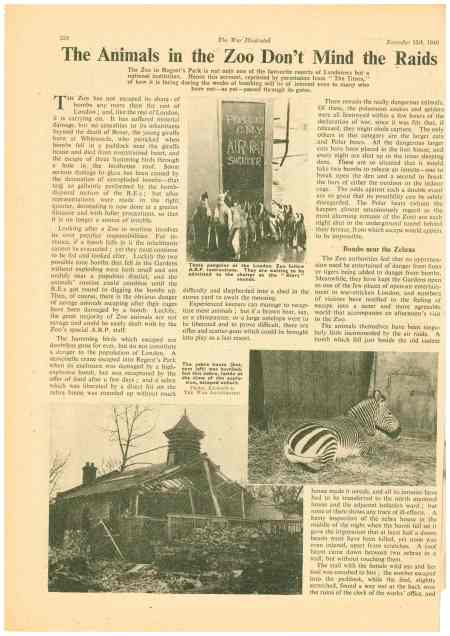
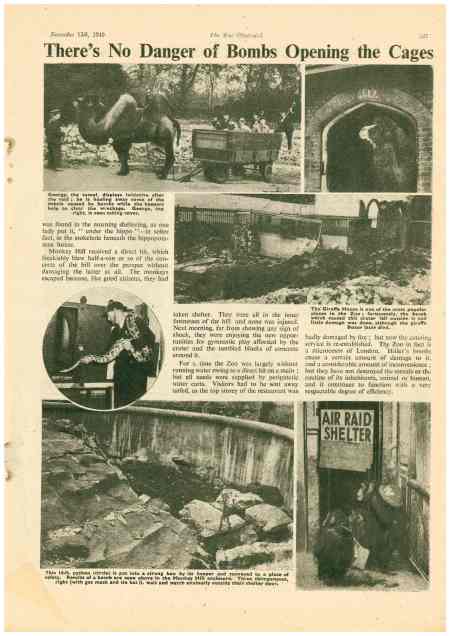
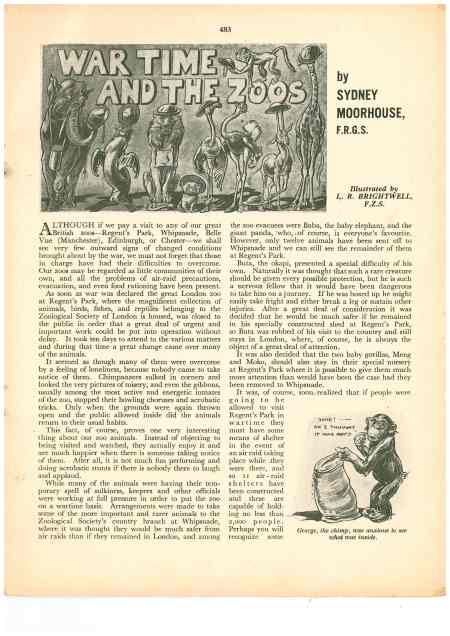
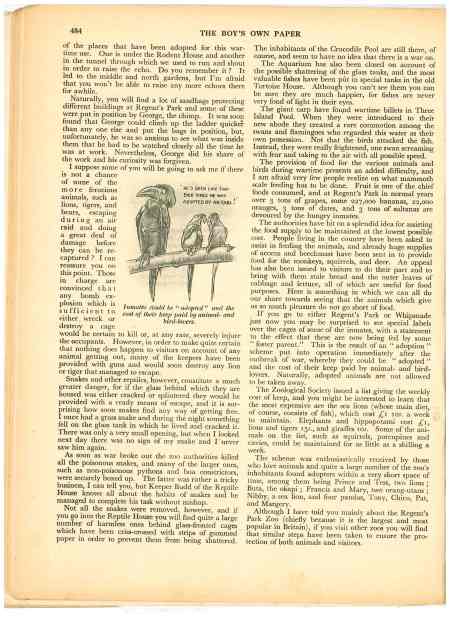

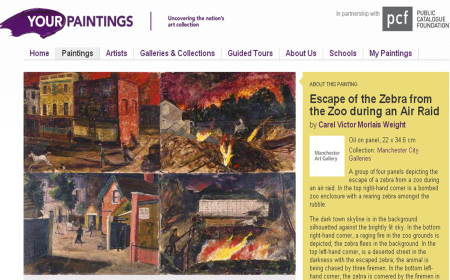
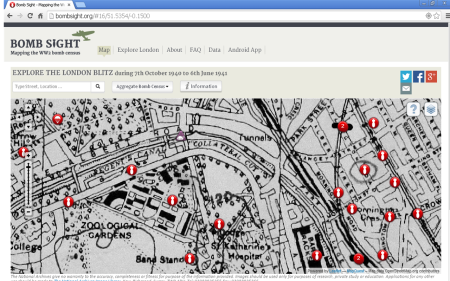
August 24, 2016 at 5:37 am |
[…] was struck the other day while reading the World War Zoo blog, a publication of the Wartime Garden Project– an initiative of the Newquay Zoo in the United […]
LikeLike